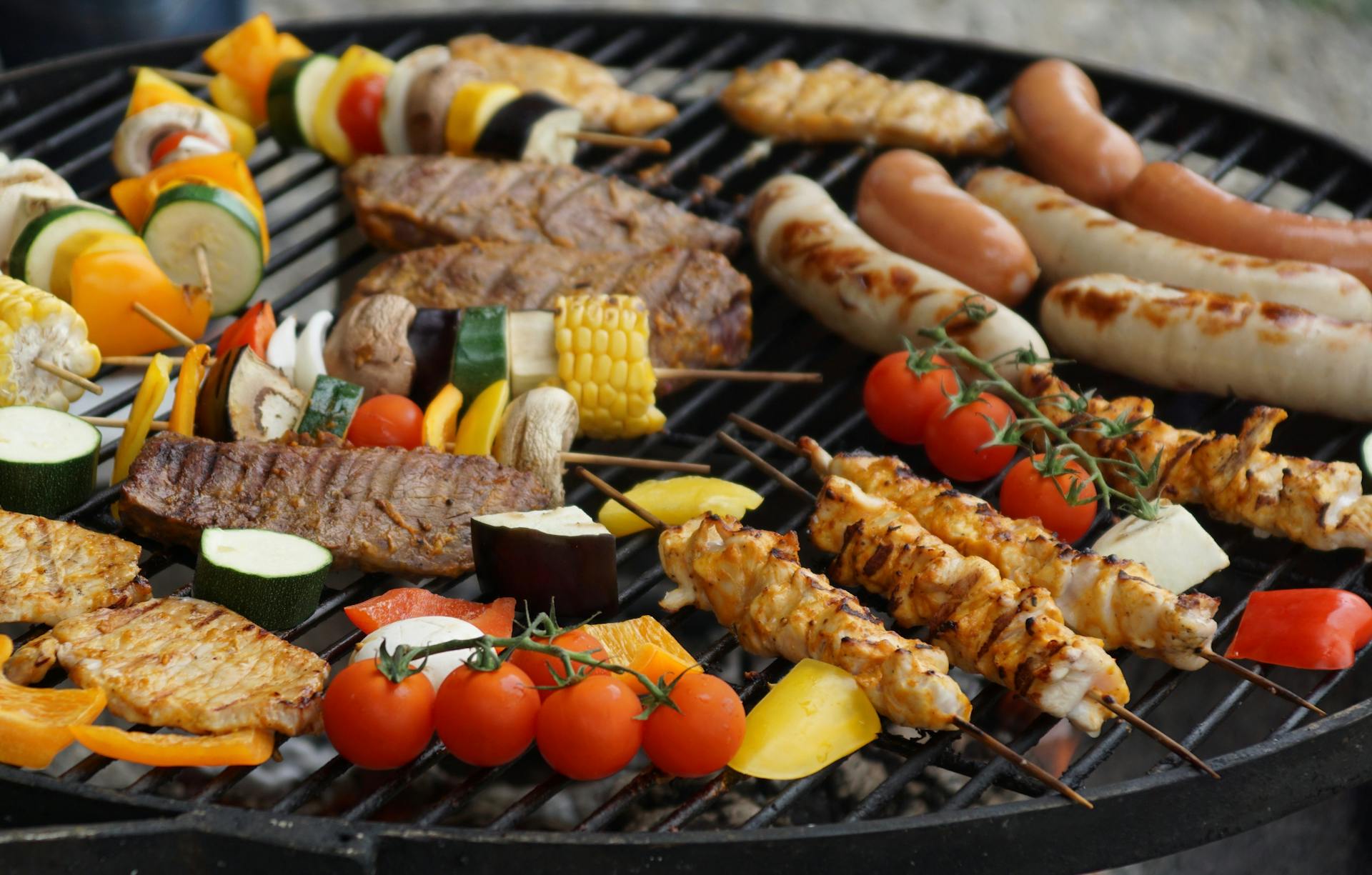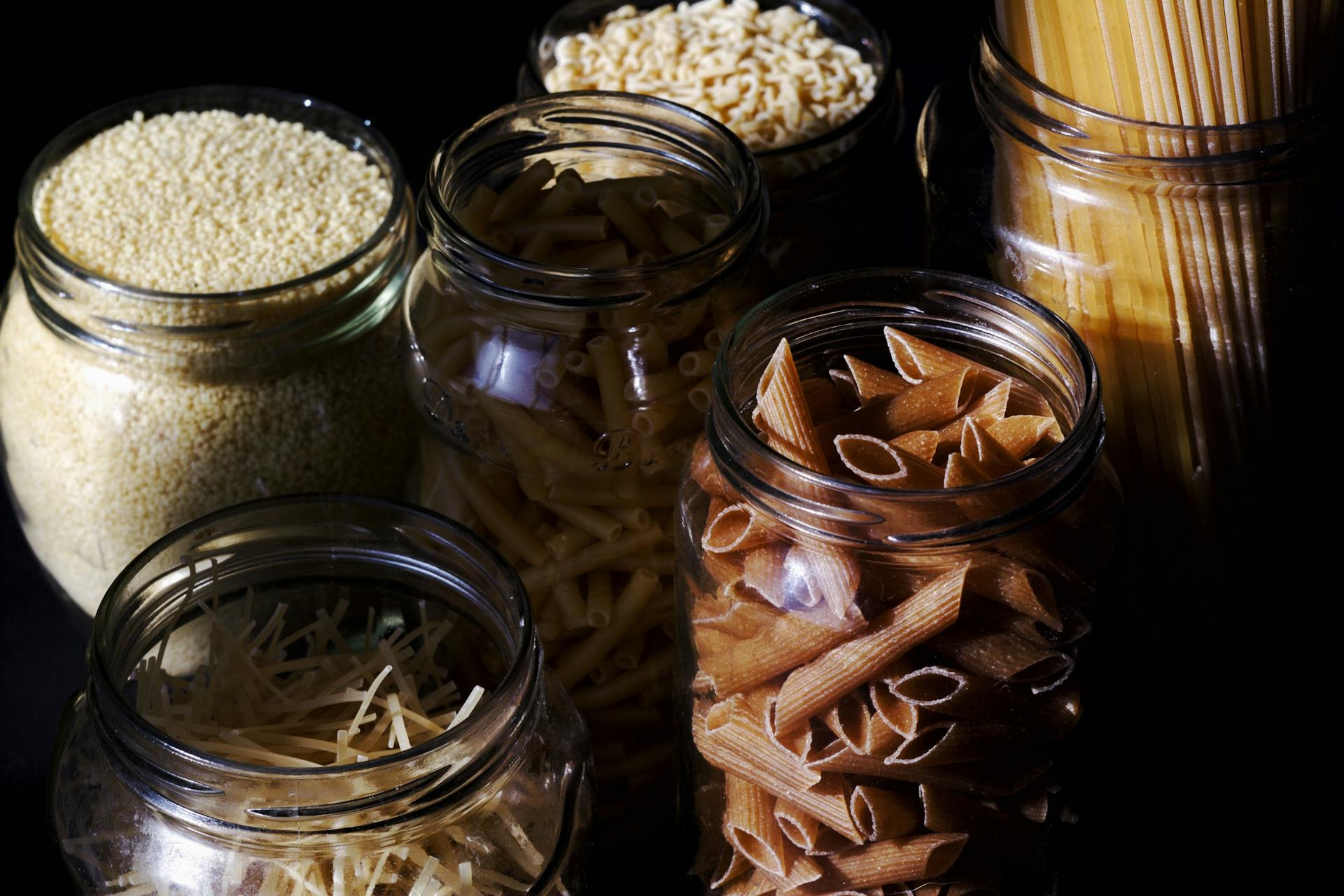
Yes, you can use regular charcoal in a Big Green Egg. However, it is important to note that regular charcoal will not get as hot as natural lump charcoal and special Big Green Egg charcoal. Unfortunately, if you opt for regular charcoal in your Big Green Egg, you won’t be able to achieve the high heat needed effectively and efficiently.
This means that if you choose to cook different recipes such as steaks involving those higher temperatures than 250 degrees Celsius (500 Fahrenheit), then using non lump-charcoal can prove ineffective and can give an inconsistent result even by using the vents supplied with the Big Green Egg. In addition regular briquettes or lumpwood charcoals also contain additives like petroleum-based substances which cannot be burnt off during the burning process and leave a ‘taint’ on food cooked with them over high temperatures. Thus leaving them unsuitable for serious BBQ cooks who like to compete or cater events at very high temperature levels.
For this reason we recommend natural hardwood charcoals especially designed for maximum burn temps such as Smoking Woods Charcoal, which is free from any harmful chemicals such as accelerants and does not taint your food so it's safe for all of your culinary adventures!
You might enjoy: Big Green Egg
Can you use lighter fluid with a Big Green Egg?
If you're a fan of grilling and are looking for that perfect barbecue flavor then you should definitely consider investing in a Big Green Egg. The Big Green Egg is an outdoor grill and smoker that uses all-natural lump charcoal to provide an intense, smoky flavor. And since this incredible grill offers such amazing results, many folks have asked the question: Can you use lighter fluid with a Big Green Egg?
The answer to this question is both clear and simple – NO. The use of lighter fluid with any type of kettle or kamado-style cooker like the Big Green Egg can be detrimental to food quality (not to mention potentially dangerous). Instead, it's recommended that you use all-natural waxy paper strips or cubes combined with natural lump charcoal in order to get your cook going perfectly every time.
In terms of lighting your fuel source, there are safe methods available such as electric starters (which plug into any standard sized outlet), ecofirestarters (an environmentally conscious mix of compressed sawdust briquettes) as well as other safer ways of getting your fire lit sans chemical additives. Using airstarters have also become popular amongst BGE enthusiast which circulate air underneath your fuel source allowing it light quickly without compromising on flavor or quality either!
At the end the day, both safety and taste must always come first when operating any type grilling system - this includes that special set up found with a Big Green Egg Grill! So remember - stay safe when using your beloved BGE and skip out on using any chemical accelerants....not only will staying chemical free keep things flavorful but also help ensure absolute peace of mind while cooking up some delicious BBQ treats!
Additional reading: Light Big Green Egg
How long does it take to cook food in a Big Green Egg?
Cooking times in the Big Green Egg vary depending on the type of food being cooked and what temperature you are cooking at. For example, a steak cooked on high heat (over 600°F) will cook more quickly than a low-and-slow type of cooking such as slow roasting a turkey. With that being said, it is hard to give an exact time frame as there are so many variables involved.
When grilling steaks and hamburgers, you can generally expect quick cook times- anywhere from 5 to 10 minutes depending on how thick they are and how well done you like your steak/hamburger. If you’re looking to smoke larger cuts of meat such as brisket or pork shoulder, plan for at least 8 hours of total cook time maybe even up to 12+ hours using indirect heat with no lid on the egg charcoal side of your Big Green Egg.
Another thing to consider is that the Big Green Egg holds its heat very well, so once it is preheated it should stay hot for quite some time before needing more fuel or adjustments in temperature control settings. This means that if you open the lid for flipping something over or check doneness levels, your food would not have lost too much heat in between adjustments which makes Big Green Eggs one of great ways to accurately - yet deliciously - prepare just about any dish!
Take a look at this: Clean Big Green Egg
What types of wood can you use for smoking in a Big Green Egg?
Smoking wood may seem like a simple choice, but it's an important decision that can make or break the flavor of your Big Green Egg BBQ. Here is some information about the types of wood that can be used for smoking in a Big Green Egg and the flavors they create.
When you smoke your food with a Big Green Egg, you’re using hardwoods rather than softwoods or resinous woods like pine. Popular options include oak, hickory, maple, cherry and applewood. Oak is one of the most common woods used for smoking on a Big Green Egg because it provides robust smoky flavoring without being too intense. Hickory has an intense flavor that stands up well to bold barbecue cuts like brisket and pork shoulder. Smoke from maple adds sweetness to poultry and seafood dishes; cherry imparts fruity notes to smoked foods; and applewood produces milder yet pleasantly sweet flavors when added during longer cooks (think pulled pork).
Because these different types of wood have so much potential for creating delicious smoked fare on your Big Green Egg, it’s important to experiment with them! Don't be afraid to mix things up with different combinations or try something completely new—your taste buds are sure to thank you in the end!
Broaden your view: Can Just Egg Be Used for Baking?
What is the ideal temperature range for searing steaks in a Big Green Egg?
At first glance, the ideal temperature range for searing steaks in a Big Green Egg may seem quite intimidating. After all, the Egg's temperature range can reach temperatures up to 700° Fahrenheit! Fortunately, that extreme heat isn’t necessary when cooking steaks on a Big Green Egg.
The ideal temperature for searing steaks on a Big Green Egg is between 500° and 600° Fahrenheit. This high heat helps create an optimal charred exterior with subtle smoky flavor while still producing juicy medium-rare doneness. Be sure to let the steak rest before eating so as to get the perfect texture while still achieving your desired doneness level.
When setting your Big Green Egg to this ideal temperature range, preheat it using indirect heating until it reaches 500-600 Degrees Fahrenheit after about 10 minutes or so of heating at full power (with vents wide open). Once you've hit this target mark, place your steak onto the cooking surface and begin to sear each side for 3-4 minutes per side at full power with both vents wide open.
When finished, let your steak rest on a cutting board with its juices intact before serving! With such efficient head retention and insulation properties built into each model’s ceramic construction, you can trust that any meal cooked within these target temperatures will turn out beautifully delicious every time!
Can you sear directly on the Big Green Egg cooking grate?
Yes, you can sear directly on the Big Green Egg cooking grate! The Big Green Egg's innovative design and convection for even heat distribution make it perfect for even searing. With the help of a cast iron griddle, you can achieve restaurant-quality results from your own backyard.
Before getting started, make sure to heat up your Big Green Egg and turn up the temperature to about 500 degrees Fahrenheit or 260 Celsius for a proper sear. If using a cast iron griddle, season it with some oil before placing it on top of your cooking grate.
You'll also want to be sure you have plenty of quality meat or fish ready to go once everything is heated up – generously season with salt and pepper as well as some herbs or spices if desired. When everything is ready and at optimal temperature, place your proteins carefully in one layer onto the hot griddle pan and let them cook until they're nicely browned on one side; if desired, use tongs or a spatula to baste in butter before flipping them over. Again let the proteins brown until they've acquired that beautiful caramelization before serving – enjoy!
The direct sear method works great with almost any type of ingredient – experiment with different types of proteins while developing new flavor combinations that you can share with friends and family!
Expand your knowledge: How Much Just Egg Is Equal to One Egg?
What is the recommended way to season a Big Green Egg?
Big Green Eggs are a type of outdoor cooker that is beloved by backyard chefs who appreciate a classic cooking experience. Seasoning your Big Green Egg properly is important to ensure it maintains its quality and produces the best possible results from your dishes. Here’s how to season your Big Green Egg for optimal performance:
1. Start by cleaning and conditioning the inside walls of the Big Green Egg with a mild dish soap or cooking oil. This helps create an even coating and prevents food from sticking, keeps other components safe, and adds flavor to whatever you cook in it.
2. Polish away any dull spots or signs of rust with steel wool or a wire brush until they are shiny again before relining them with oil if necessary.
3. After cleaning off any food residue, add several drops of liquid smoke per 4 quarts of water in the inner wall and basin area to add extra flavor when grilling or smoking foods on the Big Green Egg—this can really change the game for tasty smoked meals!
4 Finally, fire up your egg at 375 F (190 C) for 10-15 minutes while monitoring its temperature until it begins to smoke; this will ignite oils on metal parts/surfaces where food may stick or be difficult to clean off in future uses—seasoning complete!
5 Now you’re nearly ready to start putting delicious things into that tasty smoker! Enjoy all those mouth-watering flavors made possible only by properly seasoning your Big Green Egg correctly every time you use it!
Featured Images: pexels.com


